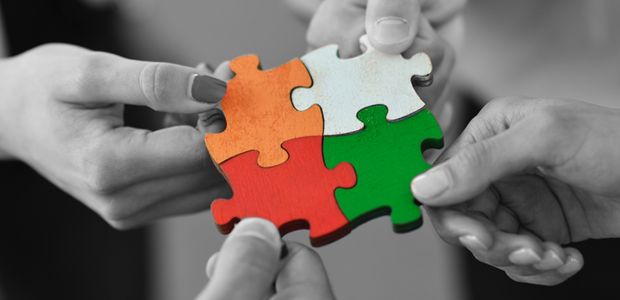According to Betrand de Jouvenel, “Groups should be regarded as primary phenomena of human existence” and “A progressive society is characterized by a great proliferation of action groups of all sizes and natures.” – “The Group”, ‘Sovereignty: An Inquiry Into The Political Good’.
And, as stated by Emile Durkheim in ‘The Division of Labor In Society’, “A Nation can be maintained only if, between the State and the individual, there is interposed a whole series of secondary groups near enough to the individuals to attract them strongly in their sphere of action and drag them, in this way, into the general torrent of social life.”
But, what is a “group”?
Building A Definition Of The Word “Group”
Let’s consider the meaning of the word “Group” from several sources. There is no need to create our own definition when content related to the topic is abundant and intelligible.
Forsyth, Lewin, Paine, De Ridder, Turner, Brown, Mills, Ostrom, Homans, Cartwright and Zander all focus on interdependence in their definitions of “group”:
Donelson R. Forsyth in ‘Group Dynamics’ defined a group as “two or more individuals who are connected to one another by and within social relationships”.
Social psychologist Kurt Lewin wrote, ‘it is not similarity or dissimilarity of individuals that constitutes a group, but interdependence of fate’.
Thomas Paine, in ‘The Rights Of Man’, wrote, “The mutual dependence and reciprocal interest which man has in man, and all the parts of a civilized community upon each other, create that great chain of connection which holds it together.”
According to Jeroen de Ridder, ‘Three models for collective intellectual virtues’, groups are “systems of interdependent roles determined by four characteristic elements: structure, function, culture, and a system of sanctions.”
John C Turner in ‘Rediscovering the social group : a self-categorization theory’ wrote that “… a group is defined as one that is psychologically significant for the members, to which they relate themselves subjectively for social comparison and the acquisition of norms and values, … that they privately accept membership in, and which influences their attitudes and behaviour.”
Meanwhile, Rupert Brown in ‘Group processes: Dynamics within and between groups’ stated that “A group exists when two or more people define themselves as members of it and when its existence is recognized by at least one other.”
Theodore M. Mills comes to us with a similar definition in ‘The Sociology Of Small Groups”, where he stated that groups are “units composed of two or more persons who come into contact for a purpose and who consider the contact meaningful.”
In ‘Understanding Institutional Diversity’ Noble Prize winner Elinor Ostrom wrote on institutions, which are essentially groups, and stated that, “Broadly defined, institutions are the prescriptions that humans use to organize all forms of repetitive and structured interactions including those within families, neighborhoods, markets, firms, sports leagues, churches, private associations, and governments at all scales.”
George Homans in ‘The Human Group’ focused on the value of smaller groups, but his definition of groups still involved interdependence. He wrote, “We mean by a group a number of persons who communicate with one another often over a span of time, and who are few enough so that each person is able to communicate with all the others, not at second-hand, through other people, but face-to-face.” For Homans, interdependence created the group.
Finally, according to Dorwin Cartwright and Alvin Zander in ‘Group Dynamics; Research and Theory’, “A group is a collection of individuals who have relations to one another that make them interdependent to some significant degree. As so defined, the term group refers to a class of social entities having in common the property of interdependence among their constituent members.”
Summing from all of the above, we come to the following definition of the word “group”:
A group is two or more individuals who are connected through interdependent social relationships within systems of structured interactions, defined by mutual recognition, shared psychological significance, direct communication, and organized by prescriptive roles characterized by structure, function, culture, and sanctions that create meaningful contact and reciprocal influence among members.
Final Thoughts
Looking at this comprehensive exploration of what constitutes a group, I’m struck by how fundamental interdependence is to human existence. The various scholars cited here – from sociologists to psychologists to political theorists – all converge on this central insight: groups aren’t just collections of individuals who happen to be near each other, but rather networks of people bound together by mutual need, shared purpose, and reciprocal influence.
What’s particularly compelling is how this definition challenges our modern emphasis on individualism. In an era where we often celebrate independence and self-reliance, these definitions remind us that we’re inherently social beings who achieve our goals, develop our identities, and find meaning through our connections with others. Whether it’s a small team working on a project, a neighborhood association, or a nation-state, the principle remains the same: we are who we are because of our interdependencies.
As we navigate an increasingly interconnected yet sometimes isolating world, understanding the true nature of groups becomes even more critical. They’re not optional add-ons to human life but, as de Jouvenel and Durkheim suggest, the very foundation of civilized society. Perhaps recognizing this can help us be more intentional about the groups we form, join, and nurture – knowing that in doing so, we’re participating in one of the most fundamental aspects of being human.
Thanks for reading!
